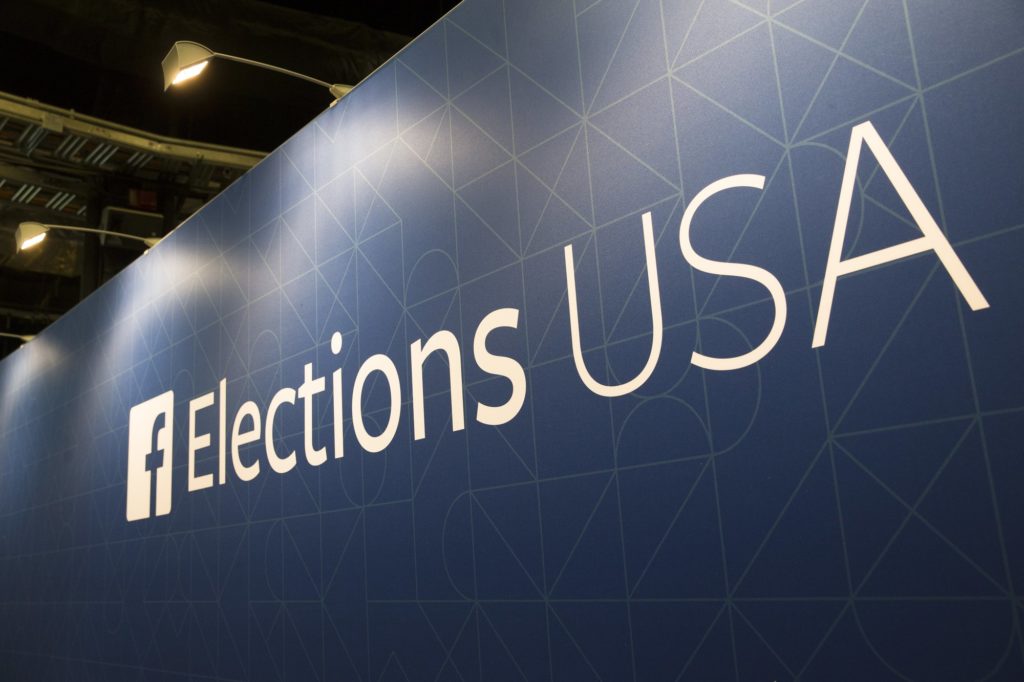Facebook and other social platforms have been fighting online misinformation and hate speech for two years. With the U.S. midterm elections just a few days away, there are signs that they’re making some headway, although they’re still a very long way from winning the war.
That’s because the effort risks running into political headwinds that Facebook, Twitter and Google find bad for business. Some even argue that the social networks are easy to flood with disinformation by design — an unintended consequence of their eagerness to cater to advertisers by categorizing the interests of their users.
Caught embarrassingly off-guard after they were played by Russian agents meddling with the 2016 U.S. elections, the technology giants have thrown millions of dollars, tens of thousands of people and what they say are their best technical efforts into fighting fake news, propaganda and hate that has proliferated on their digital platforms.
Facebook, in particular, has pulled a major reversal since late 2016, when CEO Mark Zuckerberg infamously dismissed the idea that fake news on his service could have swayed the election as “pretty crazy.” In July, for instance, the company announced that heavy spending on security and content moderation, coupled with other business shifts, would hold down growth and profitability. Investors immediately panicked and knocked $119 billion off the company’s market value.
The social network has started to see some payoff for its efforts. A research collaboration between New York University and Stanford recently found that user “interactions” with fake news stories on Facebook, which rose substantially in 2016 during the presidential campaign, fell significantly between the end of 2016 and July 2018. On Twitter, however, the sharing of such stories continued to rise over the past two years.
A similar measure from the University of Michigan’s Center for Social Media Responsibility dubbed the ” Iffy Quotient ” — which gauges the prevalence of “iffy” material on social networks — also shows that Facebook’s “iffiness” has fallen from a high of 8.1 percent 1n March 2017 to 3.2 percent on Monday. Twitter iffiness has also fallen slightly, from 5.6% in November 2016, to 4.2 percent on Monday.
Even at these levels, fake news remains huge and may be spreading to new audiences. A team led by Philip Howard, the lead researcher on Oxford’s Computational Propaganda effort, looked at stories shared on Twitter during the last 10 days of September 2018 and found that what it called “junk news” accounted for a full quarter of all links shared during that time — greater than the number of professional news stories shared during that time.
The team defined junk news as sources that published deceptive or incorrect information, often in an ideological or conspiratorial way, while failing to meet criteria such as professionalism, bias, credibility and style.
While the Oxford analysis didn’t produce similar figures for Facebook, the researchers did map out how junk news circulates on the social network and found that conspiracy theories and other misinformation once confined to a “hard right” audience are now shared more freely among mainstream conservatives as well. (Left-leaning users have also developed a taste for junk news, the Oxford team found, but it represents only a small fraction of the material they share on Facebook.)
Such studies offer imperfect pictures of what’s actually happening on social networks, since the services typically don’t offer researchers untrammeled access to their data. Twitter, for instance, takes issue with the Oxford study, noting that it used a public feed of tweets that doesn’t reflect the filtering Twitter does to remove malicious or spammy material.
Tamping down misinformation, of course, is anything but easy. Adversaries are always finding new ways around restrictions. It can also be hard to distinguish misinformation and propaganda from legitimate news, especially when world leaders such as President Donald Trump are regularly disseminating falsehoods on social media.
Politics also complicates matters, since the social-media companies are anxious to avoid charges of political bias. When Facebook, Google’s YouTube and, eventually, Twitter all banned the conspiracymonger Alex Jones for various violations of their terms of service, Jones and his allies immediately claimed he was being censored. President Trump chimed in a few weeks later with a parallel charge, claiming without evidence that Google and other companies were “suppressing voices of Conservatives and hiding information and news that is good.”
Twitter, in fact, charges that researchers such as the Oxford team define “junk news” too broadly. The group, for instance, classes conservative sites such as Breitbart News and the Daily Caller as “junk” by its criteria. Twitter argues that banning “media outlets that reflect views within American society” would “severely hinder public debate.”
Some critics charge that the very advertising-based business model that made Zuckerberg rich is also perfectly suited for propagandists. Services like Facebook and Twitter “sustain themselves by finding like-minded groups and selling information about their behavior,” Dipayan Ghosh, a former privacy policy expert at Facebook and Ben Scott, senior adviser at New America, wrote in a Time Magazine op-ed earlier this year. “Disinformation propagators sustain themselves by manipulating the behavior of like-minded groups.”
“They don’t self-regulate,” said Dora Kingsley Vertenten, a professor of public policy at the University of Southern California and CEO of research consulting firm Trenton West. “They just want to make a profit, and what they have done to date is not nearly enough.”
Really fixing the misinformation problem might require big changes to how these services work. Users started spending less time on Facebook after it made changes to make its service more “meaningful” to users, involving less scrolling through posts and more interactions with friends, the company said.
Twitter CEO Jack Dorsey has hinted that he is open to drastic changes , but he hasn’t yet said what they might look like. And there haven’t been any obvious shifts since he made that statement in August.
(AP)











